Agriculture
Why the News Block on the Plight of Dutch Farmers?
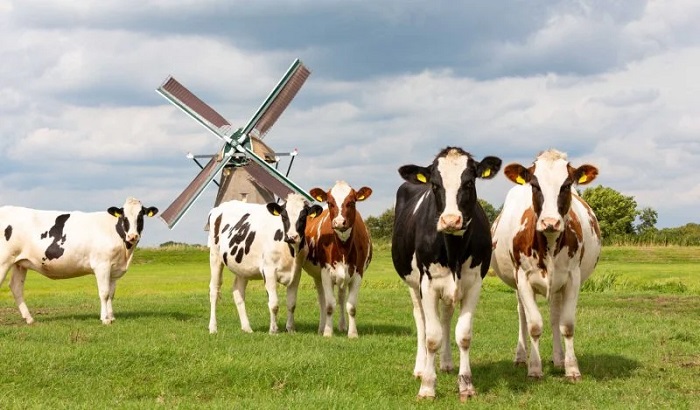
From the Brownstone Institute
BY
God made the world, but the Dutch made Holland. This truism has guided Dutch identity and its republican virtue. When the ingenious Dutch reclaimed land from the sea it was for farms and these farms and farmers have fed the Dutch people, Europe and the world for centuries.
The picture displayed here is Paulus Potter’s famous work The Bull.

Created in 1647, Potter was 22 when he painted it and not quite 30 when he died. Renowned for its massive size, detailed realism including dung and flies and as a novel monumental picture of an animal, The Bull is understood as a symbol of the Dutch nation and its prosperity.
The Dutch Golden Age resulted in part from the creation of the Dutch Republic carved out by overcoming Spanish rule in the Netherlands. The little Dutch Republic became a global naval power and cultural force. The Dutch were classical liberals and believed in individual liberties like freedom of religion, speech and association.
The Dutch Republic was noted for economic vibrancy and innovation including the emergence of commodity and stock markets. The newly minted bourgeoisie spurred the first modern marketplace for artists to sell their work and freed them from the necessity of commissions from the Church and aristocracy. This is reflected in the subject matter of much Dutch Golden Age art with its depiction of everyday life. Potter’s painting is from this era.
But his work reveals another truth. The Dutch Golden age was impossible without its farms. Food is the foundation of any successful civilization, which is why the news that the Dutch government plans to shut as many as 3,000 farms for the sake of a ‘’nitrogen crisis’’ is so puzzling.
As Natasja Oerlemans of the World Wildlife Fund-Netherlands recently stated, ‘’We should use this crisis to transform agriculture.” She went on to state that the process will require several decades and billions of euros to reduce the number of animals.
So, what in fact is the issue with nitrogen and Dutch farming?
The nitrogen crisis is a bureaucratic and muddled affair which is now and will increasingly impact all of Dutch society. In 2017 a small NGO, Mobilisation for the Environment, led by long-time environmentalist Johan Vollenbroek, went to the European Court of Justice (ECJ) to challenge the then current Dutch practices that protected natural areas from nitrogen pollution.
In 2018, the ECJ decided in a court ruling that the Dutch legislation, which allowed business to compensate for increases in nitrogen emissions with technical measures and restoration, was too lenient. The Dutch high court agreed with the ruling. In so doing almost 20,000 building projects have been put on hold, stalling the expansion of farms and dairies, new homes, roads, and airport runways. These projects are valued at €14 billion of economic activity.
Farming is intensive in the Netherlands because it is a small country with high population density. According to Science magazine ‘’Dutch farms contain four times more animal biomass per hectare than the EU average.’’ But they also point out that ‘’Practices such as injecting liquid manure in the soil and installing air scrubbers on pig and poultry facilities have reduced ammonia emissions 60% since the 1980s.’’
These mitigating systems are seen as insufficient in light of the court rulings. Ammonia is part of the nitrogen cycle and is a byproduct of waste from farm animals.
The great concern of environmental bureaucrats is the so-called ‘’manure fumes’’ from livestock waste. Like methane from farting cows, manure fumes are the big thing and katzenjammer of the movement on meat and dairy.
Dutch farmer Klass Meekma, who produces milk from the goats he raises said recently, ‘’The nitrogen rules are eagerly being used by the anti-livestock movement to get rid of as many livestock farms as they can, with absolutely no respect for what Dutch livestock farms have achieved in terms of food quality, use of leftovers of the food industry, animal-care, efficiency, exports, know-how, economics and more.’’ Meekma’s goats produced more than 265,000 gallons of milk in 2019.
In many ways, Dutch farmers are the victims of their own success. Because Holland is small, farmers have needed to be innovative in the use of space which accounts for the higher levels of ‘’animal biomass’’ compared with other European countries. Success in agricultural practices and food production has produced profits and a strong economic sector for the Dutch economy. Remarkably, the Netherlands is the second largest food exporter in the world.
The biggest push against Dutch agriculture comes from the climate change community and minister for nature and nitrogen Christianne van der Wal. She said in a letter to politicians in 2021, “There is no future (for agriculture) if production leads to depletion of the soil, groundwater and surface water, or degradation of ecosystems.” She has announced new restrictions to cut nitrogen emissions in half by 2030, to meet international climate action goals.
Nobody wants runoff from farms harming streams and wildlife. But the focus on manure fumes; that is, nitrogen and ammonia seeping into the atmosphere and impacting the climate seems far more tenuous. Primeval Europe was like Africa’s Serengeti, teeming with huge herds of ungulates like aurochs. Did their farting and waste ruin the climate?
The climate is changing. The climate has always changed. Bronze Age Europe, a particularly fecund cultural period, was markedly warmer than today.
It is curious that the farming sector is the focus of rollbacks while other polluters are being treated differently. Farmer Meekma states,
“Since then (the court rulings) our country has a so-called nitrogen crisis. It’s ludicrous that the national airport Schiphol Amsterdam and lots of industrial companies have no nature permits, and farmers are now being sacrificed to facilitate these other activities.”
“It’s a real shame how farmers are being treated in the Netherlands. They are being pushed out to make room for industry, aviation, transportation, solar fields and housing of the growing numbers of immigrants.’’
Most of the “saved” nitrogen emissions from government plans will be used to offset the increased emissions from building 75,000 houses. Only 30 percent will lead to real emission reductions.
Dutch Prime Minister and WEF luminary Mark Rutte acknowledged that the move on farming would have “enormous consequences. I understand that, and it is simply terrible.”
There are many historical examples of political pressures on farming as harbingers of disaster, from Ukraine in the Soviet Union to Zimbabwe. Both were breadbaskets and exporters reduced to famine. Controlling food production is something that political ruffians always want to achieve. The nitrogen crisis is a struggle of urban ideologues versus traditional lifeways and rural self-sufficiency. Due to the war in Ukraine and supply-chain disruption from the covid pandemic, many people around the world are facing starvation. This is not the time for Europe to harm its best agricultural producer.
Dutch farmers are hip to when a nudge becomes a shove. The anti-meat ideologues want humans to subsist on grass cuttings and Bill Gates’ lab-made gunk. Dutch farmers feed the world. Their plight is ours as well.
The nitrogen crisis has the waft of so much bullshit.
Agriculture
Canada Greenlights Mass Culling of 400 Research Ostriches Despite Full Recovery from Bird Flu Months Ago
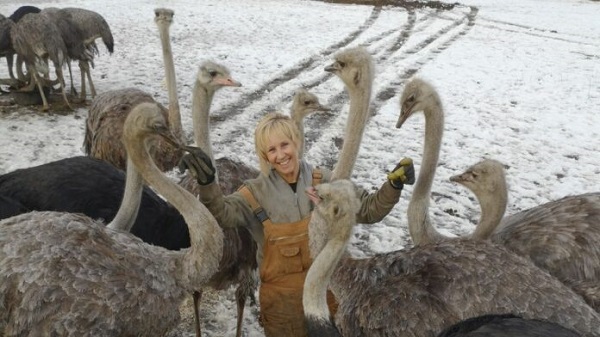
 Nicolas Hulscher, MPH
Nicolas Hulscher, MPH
Federal court upholds CFIA’s reckless cull order—setting a dangerous precedent for the unscientific mass depopulation of genetically important animals.
In March, I interviewed Katie Pasitney of Universal Ostrich and Connie Shields to discuss the alarming implications of the Canadian Food Inspection Agency (CFIA) order to cull 400 research ostriches at Universal Ostrich Farm in British Columbia over bird flu:
Canada Orders Mass Culling of 400 Research Ostriches Over Bird Flu, Refuses to Test Surviving Birds for Natural Immunity
·The Canadian Food Inspection Agency (CFIA) has ordered the culling of 400 ostriches at Universal Ostrich Farm in British Columbia, citing concerns over H5N1 bird flu. However, this decision is not based on sound science and could have serious consequences for both food security and medical research.
Universal Ostrich Farm is a research facility focused on studying the unique antibody-producing capabilities of ostriches. Their research has demonstrated potential in neutralizing viruses, bacteria, and even COVID-19, making it an important contribution to medical science.
In December 2024, the CFIA claimed that two deceased ostriches—which had been lying outside for over 16 hours—tested positive for H5N1 via PCR testing. Just 41 minutes after receiving these results, the CFIA signed an order to cull the entire flock.
The CFIA initially granted the farm an exemption, recognizing the birds as “genetically important.” Later, without clear justification, they reversed this decision, ordering their destruction.
Despite the importance of this research, the CFIA has refused to conduct further testing on the birds and has banned the farm from conducting its own tests, under threat of heavy fines and possible imprisonment. Why is the Canadian government refusing to study the potential antibodies ostriches have developed against H5N1 bird flu?
On January 31, 2025, a court granted a temporary stay of execution, halting the cull. However, the CFIA is appealing this decision, which means the culling could still proceed.
Today, we have received news that the reckless mass cull order will proceed despite their ostriches having already recovered months ago and developed natural immunity against H5N1:

Official Announcement: Federal Court Decision in Universal Ostrich Farms Inc. v. Canadian Food Inspection Agency
Dear friends and supporters,
We are absolutely devastated to share today’s Federal Court decision, issued on May 13, 2025. The court ruled in favour of the Canadian Food Inspection Agency (CFIA), upholding their order to destroy our beloved ostriches and rejecting our plea to save them.
The court’s decision accepted the CFIA’s justification under the Health of Animals Act and their use of the Stamping-Out Policy, which mandates the destruction of animals to control disease outbreaks, regardless of their health status. The court confirmed the CFIA’s approach, prioritizing trade obligations over the welfare of our animals.
In addition, we’ve been ordered to pay $15,000 in CFIA’s legal costs. You can read the full decision here: (2025 FC 878). https://saveourostriches.com/wp-content/uploads/2025/05/JR-T-294-25-and-T-432-25-Final.pdf
We are heartbroken by this outcome and uncertain about the future of our farm. As we navigate this incredibly difficult time, we ask for your patience and continued support. If you are able, please consider making a donation to help us manage the financial and emotional toll this has taken.
Thank you,
Universal Ostrich Farm
http://SaveOurOstriches.com
This deeply misguided decision sets a dangerous precedent for the Canadian government to recklessly depopulate animals at will.
By upholding the CFIA’s reckless cull order, despite the ostriches’ recovery and natural immunity, the court has prioritized trade protocols over scientific inquiry, animal welfare, and the advancement of life-saving medical research.
Epidemiologist and Foundation Administrator, McCullough Foundation
www.mcculloughfnd.org
Please consider following both the McCullough Foundation and my personal account on X (formerly Twitter) for further content.
Agriculture
Canada is missing out on the global milk boom
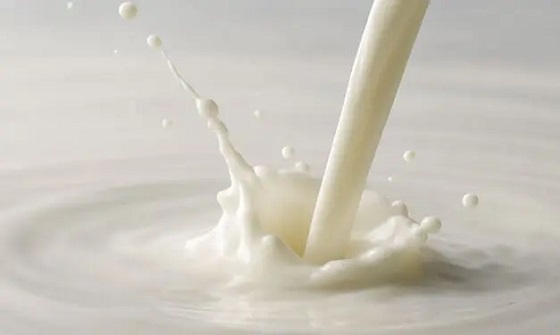
This article supplied by Troy Media.
 By Sylvain Charlebois
By Sylvain Charlebois
With world demand soaring, Canada’s dairy system keeps milk producers locked out of growth, and consumers stuck with high prices
Prime Minister Mark Carney is no Justin Trudeau. While the team around him may be familiar, the tone has clearly shifted. His first week in office signalled a more data-driven, technocratic approach, grounded in pragmatism rather than ideology. That’s welcome news, especially for Canada’s agri-food sector, which has long been overlooked.
Historically, the Liberal party has governed with an urban-centric lens, often sidelining agriculture. That must change. Carney’s pledge to eliminate all interprovincial trade barriers by July 1 was encouraging but whether this includes long-standing obstacles in the agri-food sector remains to be seen. Supply-managed sectors, particularly dairy, remain heavily protected by a tangle of provincially administered quotas (part of Canada’s supply management system, which controls prices and limits production through quotas and tariffs to protect domestic producers). These measures stifle innovation, limit flexibility and distort national productivity.
Consider dairy. Quebec produces nearly 40 per cent of Canada’s milk, despite accounting for just over 20 per cent of the population. This regional imbalance undermines one of supply management’s original promises: preserving dairy farms across the country. Yet protectionism hasn’t preserved diversity—it has accelerated consolidation.
In reality, the number of dairy farms continues to decline, with roughly 90 per cent now concentrated in just a few provinces. On our current path, Canada is projected to lose nearly half of its remaining dairy farms by 2030. Consolidation disproportionately benefits Quebec and Ontario at the expense of smaller producers in the Prairies and Atlantic Canada.
Carney must put dairy reform back on the table, regardless of campaign promises. The sector represents just one per cent of Canada’s GDP, yet
wields outsized influence on policy, benefiting fewer than 9,000 farms out of more than 175,000 nationwide. This is not sustainable. Many Canadian producers are eager to grow, trade and compete globally but are held back by a system designed to insulate rather than enable.
It’s also time to decouple dairy from poultry and eggs. Though also supply managed, those sectors operate with far more vertical integration and
competitiveness. Industrial milk prices in Canada are nearly double those in the United States, undermining both our domestic processors and consumer affordability. These high prices don’t just affect farmers—they directly impact Canadian consumers, who pay more for milk, cheese and other dairy products than many of their international counterparts.
The upcoming renegotiation of CUSMA—the Canada-United States-Mexico Agreement, which replaced NAFTA—is a chance to reset. Rather than resist change, the dairy sector should seize the opportunity to modernize. This includes exploring a more open quota system for export markets. Reforms could also involve a complete overhaul of the Canadian Dairy Commission to increase transparency around pricing. Canadians deserve to know how much milk is wasted each year—estimated at up to a billion litres—and whether a strategic reserve for powdered milk, much like our existing butter reserve, would better serve national food security.
Global milk demand is rising. According to The Dairy News, the world could face a shortage of 30 million tonnes by 2030, three times Canada’s current annual production. Yet under current policy, Canada is not positioned to contribute meaningfully to meeting that demand. The domestic focus on protecting margins and internal price fairness is blinding the sector to broader market realities.
We’ve been here before. The last time CUSMA was renegotiated, Canada offered modest concessions to foreign competitors and then overcompensated its dairy sector for hypothetical losses. This created an overcapitalized industry, inflated farmland prices and diverted attention from more pressing trade and diplomacy challenges, particularly with India and China. This time must be different: structural reform—not compensation—should be the goal.
If Carney is serious about rebooting the Canadian economy, agri-food must be part of the conversation. But that also means the agriculture sector must engage. Industry voices across the country need to call on dairy to evolve, embrace change and step into the 21st century.
Dr. Sylvain Charlebois is a Canadian professor and researcher in food distribution and policy. He is senior director of the Agri-Food Analytics Lab at Dalhousie University and co-host of The Food Professor Podcast. He is frequently cited in the media for his insights on food prices, agricultural trends, and the global food supply chain.
Troy Media empowers Canadian community news outlets by providing independent, insightful analysis and commentary. Our mission is to support local media in helping Canadians stay informed and engaged by delivering reliable content that strengthens community connections and deepens understanding across the country.
-

 Business2 days ago
Business2 days agoCarney praises Trump’s world ‘leadership’ at G7 meeting in Canada
-

 conflict2 days ago
conflict2 days agoTrump leaves G7 early after urging evacuation of Tehran
-
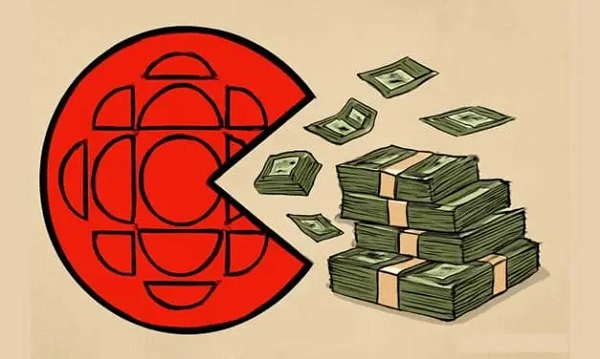
 Business1 day ago
Business1 day agoThe CBC is a government-funded giant no one watches
-

 conflict1 day ago
conflict1 day agoMiddle East clash sends oil prices soaring
-
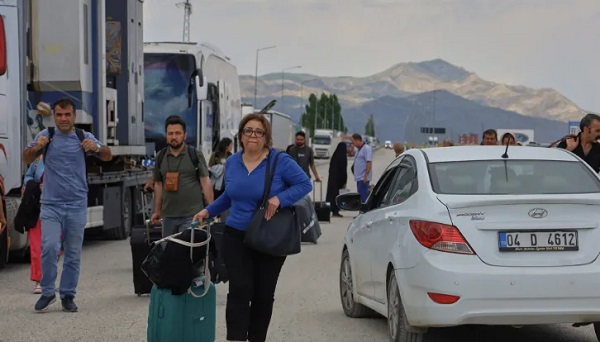
 conflict1 day ago
conflict1 day agoTrump Threatens Strike on Khamenei as Israel Pounds Iranian Military Command
-
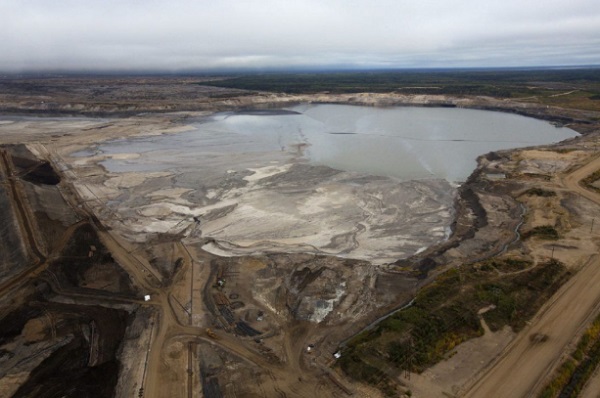
 Alberta1 day ago
Alberta1 day agoAlberta is investing up to $50 million into new technologies to help reduce oil sands mine water
-

 Business1 day ago
Business1 day agoTrump makes impact on G7 before he makes his exit
-

 Business2 days ago
Business2 days agoTrump family announces Trump Mobile: Made in America, for America









